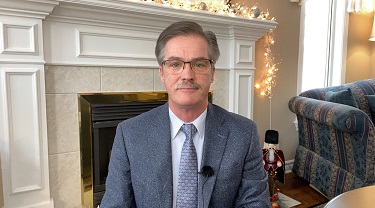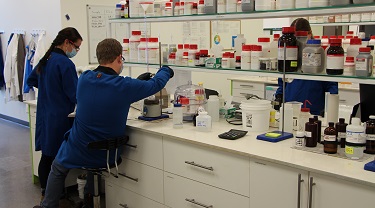Spem successus alit. If success truly nourishes hope, then we have a lot to worry about in 2021. The year began not just as a continuation of the bleak, COVID-ravaged prior one, but an accentuation of its ugly outcomes: wave-three infections, together with new, faster-spreading versions of the disease have led to tighter restrictions and lockdowns in large parts of the global economy. What a way to start; do our Happy New Year wishes already have a very hollow ring to them?
Against expectations at the early onset of COVID-19, absolutely. Most believed that by this point, the extraordinary restrictions, outsized government assistance and medical advances would see a return to normal economic activity. In fact, a large share of the global economy was back to normal, as measured by retail activity across the planet. Sadly, the pandemic’s effects have hardly been even─average activity might have recovered, but whole industries are still down in COVID-19’s chasm, with little prospect of imminent recovery. And now, wave 3.
Simply put, restrictions haven’t been enough. Even China’s ultra-tight controls have failed to eradicate the virus. New outbreaks in Hebei province in the first 10 days of the year have spurred local lockdowns and added seven days to the 14-day post-travel quarantine period.
It’s worse in the West. Against hopes that we’d be able to be more targeted and surgical about isolating new outbreaks, we’re back to generalized lockdown. What that means is a softer economy, and more need for stimulus to buy time until we beat this thing.
Hopes are increasingly resting on mass administration of vaccines. To date, three have been fast-tracked through what are normally multi-year approval processes. This has instilled hope in many who see mass vaccination as our fastest ticket to a mid-year return to normal. At the same time, many are suspicious of potential side-effects of the novel vaccines; large swathes of the population may well resist the inoculation initiatives.
Clearly, everyone wants a restored economy. And that won’t happen until COVID-19 is licked. That’s 2021’s big challenge.
It doesn’t stop there, though. Political polarization, with us and growing now for over a decade, has only been accentuated by the pandemic. A critical hurdle this year will be the transition of power in the United States. This doesn’t just mean getting to Jan. 20; the deep divide in U.S. political views is a threat to cohesion for some time to come and magnifies the challenge of dealing with the pandemic and its longer-term consequences.
This isn’t just a U.S. thing. As expected, brinksmanship forced 11th-hour Brexit solutions, but polarized Brits will likely wrangle over the fallout of the deal as its true impacts become more obvious in the coming months and years. At the same time, the Continent hardly gets a free pass; political divisions there will be tested later this year as German Chancellor Angela Merkel steps down.
Widespread internal political divisions virtually guarantee a rough road for international relations. It’s simply too convenient to blame domestic woes on outsiders, or to simply distract the discontented with some offshore issue. U.S.-China relations may be the most obvious external fracas, but far from the only one.
A return to normal activity is for the most part a remedy for what ails the economy and geopolitics. However, achieving that magic moment will usher in new obstacles. Perhaps the greatest will be the realization of what COVID-19’s interruption has truly cost. The massive increase in sovereign debt will have to be addressed, and without some magical wand-waving, it looks like fiscal redress will take a bite out of medium- and longer-term growth.
Fortunately, one key economic strength gives hope for the short-term. Prior to the pandemic, there was evidence of a large store of pent-up demand in the U.S. and Europe. That only grew as lockdowns suspended large chunks of discretionary spending. Unspent money is piling up in bank accounts, ready to be unleashed on the economy when the time is right. The amounts are substantial and will be a very needed antidote when public spending starts to dry up.
The bottom line?
In many ways, today feels like the bleak midwinter. Hopes of recovery and a return to life the way it was just a year ago have for the moment been dashed. If success truly does nourish hope, then it’d be good to get a few notches in the “win” column. Here’s to scoring a few early victories, with very best wishes for a happy, healthy and prosperous new year.
This commentary is presented for informational purposes only. It’s not intended to be a comprehensive or detailed statement on any subject and no representations or warranties, express or implied, are made as to its accuracy, timeliness or completeness. Nothing in this commentary is intended to provide financial, legal, accounting or tax advice nor should it be relied upon. EDC nor the author is liable whatsoever for any loss or damage caused by, or resulting from, any use of or any inaccuracies, errors or omissions in the information provided.






